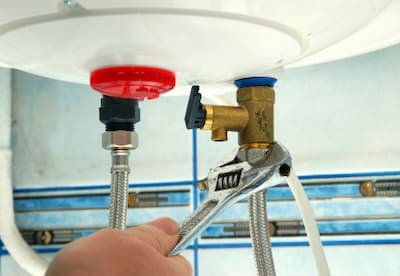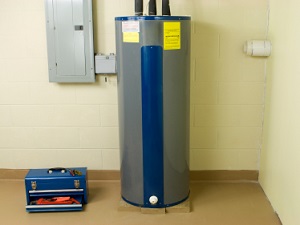The content directly below on the subject of Water Heater Maintenance Tips You Can't Afford to Forget is absolutely insightful. Give it a go and make your own ideas.

Warm water is crucial for daily convenience, whether it's for a refreshing shower or washing recipes. To ensure your warm water system runs effectively and lasts much longer, routine upkeep is crucial. This write-up supplies practical tips and understandings on just how to maintain your home's warm water system to stay clear of disturbances and costly repairs.
Introduction
Preserving your home's warm water system may appear difficult, however with a couple of easy steps, you can ensure it runs smoothly for several years ahead. This guide covers whatever from recognizing your warm water system to DIY maintenance pointers and knowing when to employ specialist aid.
Value of Keeping Your Hot Water System
Normal upkeep not only prolongs the life expectancy of your warm water system but also guarantees it runs successfully. Neglecting upkeep can lead to reduced performance, greater energy expenses, and even early failing of the system.
Signs Your Hot Water System Demands Maintenance
Knowing when your hot water system requires focus can prevent major issues. Look out for signs such as inconsistent water temperature, weird sounds from the heating system, or rustic water.
Comprehending Your Hot Water System
Before diving into upkeep jobs, it's handy to recognize the standard parts of your warm water system. Normally, this includes the water heater itself, pipes, anode rods, and temperature level controls.
Monthly Upkeep Tasks
Normal month-to-month checks can help catch minor issues prior to they rise.
Purging the Water Heater
Flushing your water heater removes sediment build-up, boosting effectiveness and lengthening its life.
Monitoring and Changing Anode Rods
Anode poles stop deterioration inside the container. Evaluating and changing them when broken is crucial.
Inspecting and Adjusting Temperature Settings
Changing the temperature level setups makes sure optimal performance and safety.
DIY Tips for Upkeep
You can execute numerous upkeep jobs yourself to keep your hot water system in leading condition.
Checking for Leakages
Frequently examine pipes and connections for leaks, as these can cause water damages and higher bills.
Testing Stress Alleviation Valves
Checking the pressure relief valve guarantees it operates correctly and prevents too much pressure build-up.
Shielding Pipes
Insulating warm water pipes reduces warmth loss and can conserve energy.
When to Call a Professional
While do it yourself upkeep is useful, some problems require specialist know-how.
Complex Concerns Requiring Specialist Assistance
Examples consist of major leakages, electric problems, or if your hot water heater is constantly underperforming.
Routine Expert Maintenance Conveniences
Professional upkeep can consist of comprehensive examinations, tune-ups, and guaranteeing conformity with security standards.
Verdict
Regular upkeep of your home's hot water system is vital for efficiency, durability, and cost financial savings. By adhering to these suggestions and recognizing when to seek professional assistance, you can ensure a trustworthy supply of hot water without unanticipated disruptions.
Water Heater Maintenance Tips
Test the TPR Valve
Shut off the power and the cold-water supply valve. Place a bucket under the pipe connected to the temperature-pressure-release (TPR) valve on the top or side of the tank. (This valve opens if the tank pressure gets too high.) Lift the valve’s tab to let some water out, then let go. If water keeps flowing, drain the tank partway, unscrew the old valve with a pipe wrench, and install a new one. Check the Anode Rod
Put a hose to the tank’s drain cock and let out a few gallons of water. Now fit a 1 1/16-inch socket onto the rod’s hex head on top of the heater (or under its top plate) and unscrew the rod. If it’s less than ½ inch thick or coated with calcium, buy a new one, wrap its threads with Teflon tape, put it back in the tank, and tighten securely. Use this segmented rod if headroom above the tank is limited. Drain the Tank and Wash Out Sediment
Drain the remaining water in the tank into the bucket, then stir up the sediment on the tank’s bottom by briefly opening the cold-water supply valve. Drain and repeat until clean water comes out of the hose. Close the drain cock, refill the tank, and turn its power back on. Adjust the Temperature
Find the temperature dial on the side of the tank and unscrew its cover. Adjust the dial to 120 degrees using a flathead screwdriver. For every 10 degrees the temperature is lowered, you can expect to save up to 5 percent in energy costs. Turn the water heater off or the thermostat down to its lowest setting if you plan to be away from home for more than three days. Insulate the Pipes
Buy some self-sticking 3/8-inch-thick foam pipe insulation that matches the pipes’ diameter. Slide the foam over the hot-and cold-water pipes as far as you can reach. Insulating the cold-water pipe prevents condensation in summer. Peel the tape and squeeze the insulation closed. If the pipe is 6 inches or less from the flue, cover it with 1-inch-thick unfaced fiberglass pipe wrap. https://www.thisoldhouse.com/plumbing/21016402/how-to-maintain-a-water-heater

Hopefully you enjoyed reading our post about Tips on Maintaining a Water Heater. Thank you for spending some time to read our piece. Sharing is nice. You just don't know, you could be doing someone a favor. We recognize the value of reading our article about Water Heater Maintenance Tips You Can't Afford to Forget.
Show Details